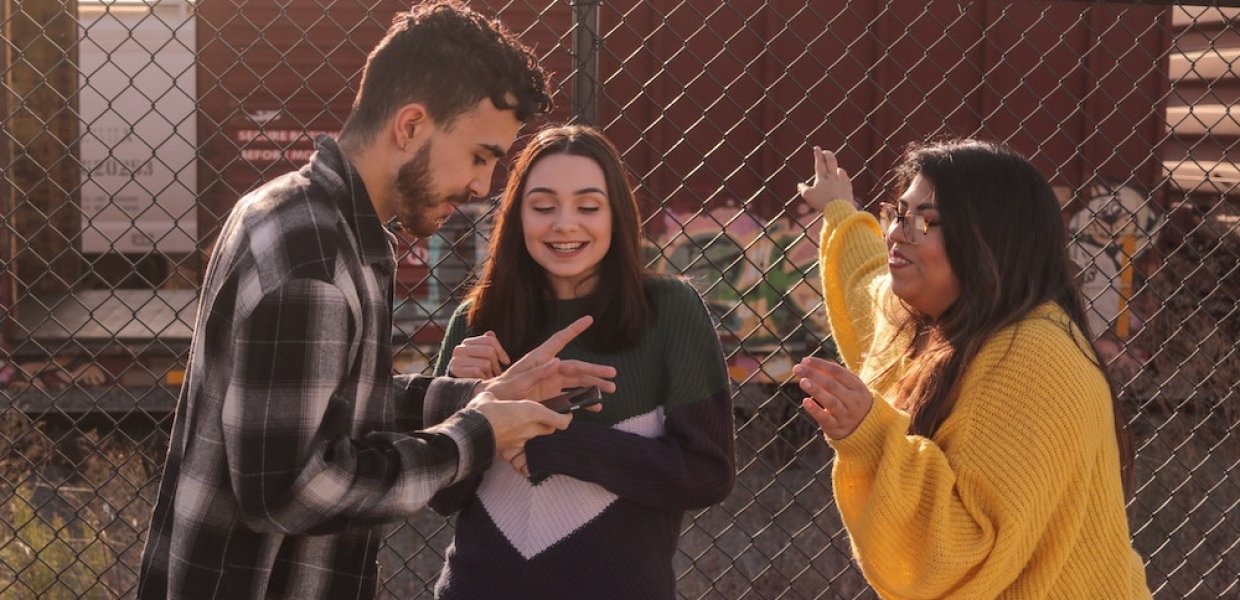“In July 2019 I did something I have never done before: I went viral. A friend and I quickly filmed a parody of the #BottleCapChallenge, where participants kick a cap off a bottle in epic fashion. Little did I know that, in less than 36 hours, the video would make it to TikTok’s ‘For You Page’ and accrue more than 155,000 views. I was officially famous.” — Patrick Mazuca
Often compared to the now-defunct Vine, TikTok is very different from social media platforms like Facebook, Snapchat, Twitter or Instagram. That’s because it’s not built on personal connections or friend circles. Rather, users see what’s popular in a personalized feed, known as the “For You Page.”
“For You Page” inner workings are a mystery, but one thing is clear — the algorithm has global users hooked. The platform reports that of over 500 million active users, two-thirds are under the age of 30. If you hear that, it’s the sound of advertisers licking their lips. Equally impressive, TikTok says their 27 million US users open the app eight times a day!
The value of a platform with a massive young millennial and Gen Z audience is obvious, but Snapchat has that too. Why are so many marketers increasingly taking note of TikTok engagement? Likes and comments on TikTok are reminiscent of other social platforms, but the new engagement opportunities TikTok has unleashed are where the story really is. One of those, “Duets,” lets content creators create videos with a brand’s audio and video to share to their own personal audiences. It’s an entirely new ad format, similar to “sponsored lenses” on Snap.
On TikTok, users aren’t just passively liking posts, they’re creating pop culture. In fact, the “challenge” and “trend” elements of TikTok are seemingly stronger than any other platform today. There is no better example of this than Lil Nas X’s “Old Town Road” breaking the Billboard streaming record — 17 weeks at #1 — all because of its popularity on TikTok through viral dance challenges and parody videos.
Brands, of course, are jumping on the bandwagon, turning TikTok audiences into brand advocates in new and exciting ways. Chipotle is a great example. To celebrate National Avocado Day, the chain hosted a challenge urging consumers to dance for free guacamole — the #GuacDance — and it paid off big time. Chipotle vice president of marketing Stephanie Purdue credited the importance of brands showing up where valuable Gen-Z and millennial target audiences are, “like TikTok,” when asked about what marketing efforts supported their 99% year-over-year digital sales growth.
That’s not to say the platform isn’t without criticism. In February 2019, the FTC fined TikTok $5.7 million for illegally collecting the names, email addresses, pictures and locations of children under 13, a record penalty for violations of the nation’s child privacy law.
For months before the FTC fining, many politicians commented negatively about the platform. However, other politicians-turned-presidential-candidates have used TikTok to garner intel and help reach younger voters. Andrew Gauthier, former head of BuzzFeed Video and head of digital content on the Kamala Harris’ presidential campaign even was quoted to say, “It’s almost like a look into the teenage id.”
There’s no doubt TikTok has a scrappy feeling to it, with hastily edited raw videos produced with nothing more than a phone making its front page. For some marketers and PR professionals, that may make the platform seem risky — but that “authentic” communication style is what’s resonating with today’s youth, after years of polished perfection on social media.
The best advice for understanding TikTok is to take a bit of time and really enjoy it. Look at videos, see what is trending, enjoy the content, perhaps film your own. Because the first step to crafting effective communication on any platform is to understand what audiences want. Who knows? You might even go viral.
To download a full copy of the 2020 Relevance Report, click here.
